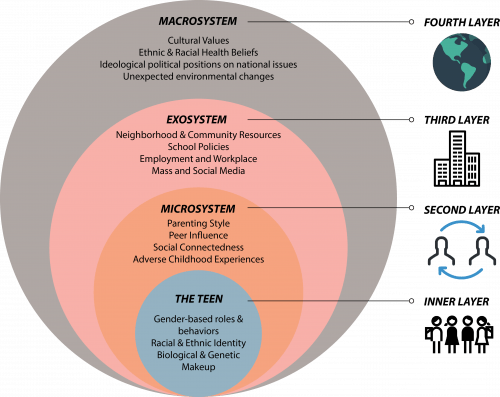by Art Elster, MD, MJ
“America created the teenager in its own image–brash, unfinished, ebullient, idealistic, crude, energetic, innocent, greedy, changing in all sorts of unsettling ways. A messy, sometimes loutish character who is nonetheless capable of performing heroically when necessary, the teenager embodies endless potential not yet hobbled by the defeats and compromises of life. The American teenager is the noble savage in blue jeans, the future in your face”[1]. This is quite a colorful characterization of teenagers making the physical, emotional, and social transition from the dependency of childhood to the independence of living in the adult world. How did we come to view teenagers in such a passionate and value-laden manner and, more importantly, why does it matter?
The concept of adolescence as a special population is a 20th century American phenomena. Social- cultural changes in society and technological and scientific advances all helped focus attention on the role of youth as a special population. We now appreciate both the promise and the problems associated with today’s teenagers and strive to learn more about the many factors that influence health, both positively and negatively.
A myriad of factors shape the development of the modern teenager, and while this is not a comprehensive review of science literature, here I will attempt to clarify how and why individual characteristics develop within the rubric of a clearly defined youth culture that simultaneously glorifies the beauty, energy, and idealism of youth and condemns youth for the ills of society. Development is complex, encompassing many layers that are neither rigid nor stable, and care must be taken not to over-simplify the process. My discussion will be organized on Urie Bronfenbrenner’s ecological model of development that posits how socio-environmental systems influence development. This model is best understood as concentric layers of an onion, with the teen at the center and progressive systems surrounding this core.
About the Author
Dr. Art Elster is a pediatrician with specialty training in adolescent medicine. His professional work includes academic medicine, NIH research, and science policy at the American Medical Association. He is past president of the Society for Adolescent Medicine. Currently, Dr. Elster teaches in the MPH program at Northwestern, and the MJ Program at Loyola Chicago School of Law. He has authored many scientific papers and several books, and has been a visiting professor both nationally and internationally.
[1] Hine T. The Rise and Fall of the American Teenager. Perennial 2000, New York, NY; Chapter 1, The Teenage Mystique, pg 10.

